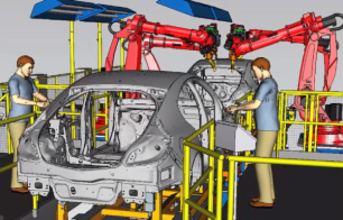
In the 1990's, the world economy started experiencing a global increase in trading, altering the nature of traditional value chains. There was a massive migration of manufacturing industries from advanced countries to developing economies, transforming some Asian countries into industrial giants.
The chain of events that followed resulted in the concentration and redistribution of industrial activities in China and India - the two most populous and fastest-growing economies in Asia.
KPMG points out the manufacturing sector in India has the potential to reach US$1 trillion by 2025, and contribute approximately 25 percent to 30 percent to India's GDP. This contribution in the future is expected to put India at par with the manufacturing levels of countries such as China, Germany, Japan and the U.S.
The growth of Asia's market share from a global manufacturing standpoint is shifting the balance of economic power in its favour. The continued increase in this market share has a significant implication on the rest of the world; it has already generated ripples, and radically altered the parameters governing development pace and composition.
But what does this mean for the average Indian manufacturer at the heart of this industrial revolution? How are the shop floors in India responding to this tremendous appetite for growth and the challenges that it brings today?
(Continued on the next page)
